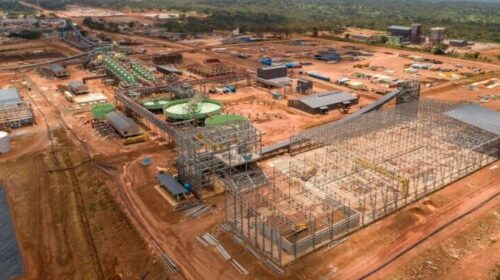Strong demand from China is reshaping the world’s copper market
China’s net imports of refined copper jumped 38% to 4.4 million tonnes last year, breaking all historical records.
The country’s demand for metal from the rest of the world was one million tonnes higher than the previous peak in 2018 and 1.2 million tonnes higher than what was imported in 2019.
This extraordinary buying frenzy has propelled the London Metal Exchange (LME) copper price from its low covid-19 of $ 4,371 per tonne in March of last year to over $ 10,000 per tonne, for the last time at $ 9,985.
It has also reshaped the statistical landscape of the copper market, judging by the latest forecast from the International Copper Study Group (ICSG).
The Group suggests that the global market will record modest supply surpluses of 79,000 tonnes and 109,000 tonnes respectively this year and next.
If this seems a bit at odds with the bullish exuberance currently plaguing the copper market, it’s because of what happened last year.
China has sucked so much metal from the global market that copper has recorded a deep statistical deficit of 600,000 tonnes between supply and demand, according to the ICSG. This black hole occupies a preponderant place in the Group’s outlook.
However, Chinese imports are now slowing and the big question is what happens when the large copper conductor stops conducting.
A deficit expected this year?
Copper use outside of China collapsed 9% last year, with pandemic lockdowns having “a noticeable negative impact on the global economy and subsequently on major copper end-use sectors. across all regions, ”ICSG said in its latest biannual market assessment.
Such an implosion in demand should have resulted in a massive surplus of unsold metals and a sharp increase in inventories.
This did not happen, however, thanks to China removing a record 4.7 million tonnes of metal from the international market with just a net offsetting exports.
This strength of imports radically affects calculations of the balance of the world market.
Calculating the use in the copper market is difficult because copper is continuously smelted in different forms for a myriad of end products. Statistical problems are compounded when it comes to determining what is going on in China’s massive and geographically dispersed manufacturing sector.
This is why the ICSG and other analysts use an “apparent” calculation of demand, based on relatively solid data such as domestic production, visible changes in inventories and, of course, net trade.
Factoring in last year’s huge net imports into this statistical equation, “apparent” use in China jumped 13% last year. This more than made up for the collapse in demand everywhere else and generated the ICSG assessment that the world market was in a supply and use deficit of 604,000 tonnes last.
In addition, the distorting effect of imports permeates the surplus forecasts this year and next. China’s “apparent” use is expected to decline sharply as imports decline, a statistical quirk that will lessen the impact of the actual pick-up in demand in the rest of the world.
The main lessons from this hazy statistical landscape are that the size of the expected surplus – a cumulative 188,000 tonnes this year and next – is marginal in the context of a 25 million tonnes market and modest in comparison. to the deficit calculated last year.
![]()





